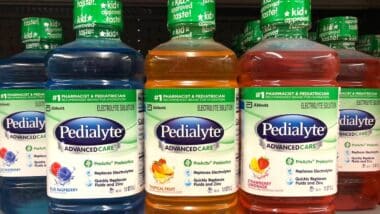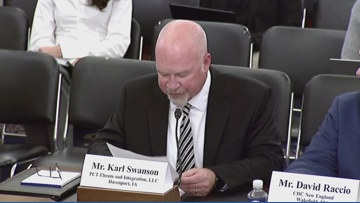Program Report: PISD Employee Child Care Center
Fostering Sustainable Development through Early Childhood Education
The PISD Employee Child Care Center provides high-quality early care and education, grounding its operations in child development research and developmentally appropriate practices. The program is a holistic, child-centered initiative that actively contributes to several United Nations Sustainable Development Goals (SDGs) by nurturing the social-emotional, intellectual, and physical development of each child through carefully selected and sequenced learning experiences.
Alignment with Sustainable Development Goal 4: Quality Education
The Center’s core mission directly supports SDG 4, which aims to ensure inclusive and equitable quality education and promote lifelong learning opportunities for all. Specifically, the program addresses Target 4.2: ensuring all children have access to quality early childhood development, care, and pre-primary education.
Foundational Learning and Curriculum
The curriculum is designed to establish a robust foundation for a lifetime of learning, fostering natural curiosity and a strong sense of self. Key components include:
- Curriculum Alignment: The use of the “Frog Street Press” curriculum for three-year-olds ensures alignment with the PISD Early Childhood Program standards, providing a seamless educational pathway.
- Skill Development: Children are taught essential skills that form the basis of quality education, including sound language skills, clear expression of ideas, creative problem-solving, and social negotiation.
- Cognitive Growth: Activities encourage children to make comparisons, predict outcomes, and develop critical thinking skills necessary for future academic success.
School Readiness and Lifelong Learning
A primary objective is to prepare children for a successful transition into kindergarten and beyond. The program cultivates the necessary skills, self-confidence, and readiness to learn, ensuring they are well-equipped for primary education as stipulated in SDG Target 4.2.
Integration of Sustainable Development Goal 3: Good Health and Well-being
The Center places significant emphasis on SDG 3, which seeks to ensure healthy lives and promote well-being for all at all ages. This is achieved through a dedicated focus on the social, emotional, and physical health of the children.
Social-Emotional Development and Mental Well-being
In collaboration with the C.A.R.E. team and utilizing the “Settle Your Glitter” curriculum from the Momentous Institute, the program actively promotes mental well-being (SDG Target 3.4). Lessons incorporating songs, books, art, and games are designed to teach:
- Self-regulation
- Problem-solving skills
- Building safe and healthy relationships
- Expressing personal feelings in socially-acceptable ways
Supporting Broader Sustainable Development Goals
Advancing Gender Equality (SDG 5) and Reducing Inequalities (SDG 10)
By providing accessible, high-quality childcare, the Center supports the full and effective participation of its employees in the workforce, a key component of SDG 5 (Gender Equality). Furthermore, the program ensures that children from diverse backgrounds within the PISD community have an equitable start, contributing to SDG 10 (Reduced Inequalities).
Parental Partnership and Required Items
To support the program’s educational and well-being objectives, parents are requested to provide the following items for their child. All personal items must be clearly labeled.
- Rest Materials: A nap mat or blanket and a small pillow. A single “security item” such as a stuffed animal or doll is also permitted for nap time. All bedding will be sent home weekly for laundering.
- Apparel: Two complete, seasonally-appropriate changes of clothing (including socks, shoes, and underwear) and necessary outerwear (coats, sweaters).
- Activity Shirts: Five repurposed or old shirts for use during lunch and art activities to promote reuse and protect clothing. These will be sent home daily for washing.
1. Which SDGs are addressed or connected to the issues highlighted in the article?
SDG 4: Quality Education
- The article is centered on the PISD Employee Child Care Center, which provides “high quality early care and education.” This directly aligns with the goal of ensuring inclusive and equitable quality education. The text emphasizes that the curriculum is designed to foster “intellectual” development and prepare children for “kindergarten and beyond,” which are core components of quality education.
SDG 3: Good Health and Well-being
- The program is described as a “holistic child-centered program” that nurtures “social-emotional” and “physical development.” It also focuses on teaching “self-regulation, problem-solving skills and safe relationships.” These elements are crucial for promoting mental health and well-being from an early age.
SDG 5: Gender Equality
- By providing an “Employee Child Care Center,” the employer (PISD) offers a crucial service that enables parents, particularly women who often bear a disproportionate share of childcare responsibilities, to participate fully in the workforce. This support system is a key enabler of economic empowerment and gender equality.
SDG 8: Decent Work and Economic Growth
- The provision of employee childcare is a family-friendly policy that supports working parents. This allows them to maintain “decent work” and contributes to “productive employment,” which in turn fosters sustainable economic growth for the community and the organization.
2. What specific targets under those SDGs can be identified based on the article’s content?
SDG 4: Quality Education
- Target 4.2: “By 2030, ensure that all girls and boys have access to quality early childhood development, care and pre-primary education so that they are ready for primary education.” The article directly addresses this target by describing a program that provides “high quality early care and education” with the explicit aim of preparing children “for the transition from an early childhood program into kindergarten and beyond.”
SDG 3: Good Health and Well-being
- Target 3.4: “By 2030, reduce by one third premature mortality from non-communicable diseases through prevention and treatment and promote mental health and well-being.” The article connects to the “promote mental health and well-being” aspect of this target. It details how the curriculum fosters “social-emotional” development, teaches “self-regulation,” and helps children express “personal feelings in socially-acceptable ways” using specific programs like “Momentous Institute’s Settle Your Glitter curriculum.”
SDG 5: Gender Equality
- Target 5.4: “Recognize and value unpaid care and domestic work through the provision of public services, infrastructure and social protection policies…” The “PISD Employee Child Care Center” acts as a social protection policy provided by an employer. It formally recognizes and provides a solution for care work, enabling employees to balance professional and family responsibilities.
SDG 8: Decent Work and Economic Growth
- Target 8.5: “By 2030, achieve full and productive employment and decent work for all women and men…” The childcare center is a key support structure that enables parents to achieve “full and productive employment.” By removing a significant barrier to workforce participation, the program helps its employees maintain their careers.
3. Are there any indicators mentioned or implied in the article that can be used to measure progress towards the identified targets?
For Target 4.2 (Quality Early Childhood Education):
- Implied Indicator: Proportion of children developmentally on track. The article states the program’s goal is to equip children with the “necessary skills to promote self-confidence and a readiness to learn with success.” This implies that the children’s developmental progress and readiness for kindergarten are key measures of the program’s success, aligning with Indicator 4.2.1.
- Mentioned Indicator: Use of standardized, quality-focused curricula. The article explicitly mentions the use of “Frog Street Press,” which is “aligned with the PISD Early Childhood Program,” and the “Settle Your Glitter curriculum” from the “Momentous Institute.” The adoption of such recognized curricula serves as a direct indicator of the quality of education being provided.
For Target 3.4 (Promote Mental Health and Well-being):
- Mentioned Indicator: Implementation of social-emotional learning programs. The article specifies that caregivers use lessons designed with the “C.A.R.E. team” and materials from the “Momentous Institute” to “engage children during important social emotional learning.” The implementation and use of these specific programs and lessons are a direct indicator of efforts to promote mental well-being.
For Targets 5.4 & 8.5 (Support for Working Parents):
- Implied Indicator: Number/proportion of employees utilizing employer-provided childcare. The existence of the “PISD Employee Child Care Center” itself is an indicator of support. The number of employees who enroll their children in the center would be a quantifiable measure of its role in supporting the workforce, thereby enabling productive employment and promoting gender equality.
4. Table of SDGs, Targets, and Indicators
| SDGs | Targets | Indicators (Mentioned or Implied in the Article) |
|---|---|---|
| SDG 4: Quality Education | 4.2: Ensure access to quality early childhood development, care, and pre-primary education. |
|
| SDG 3: Good Health and Well-being | 3.4: Promote mental health and well-being. |
|
| SDG 5: Gender Equality | 5.4: Recognize and value unpaid care work through the provision of public services and social protection policies. |
|
| SDG 8: Decent Work and Economic Growth | 8.5: Achieve full and productive employment and decent work for all. |
|
Source: pisd.edu







